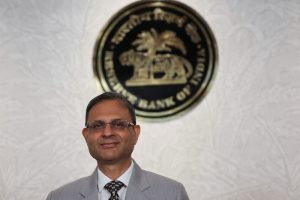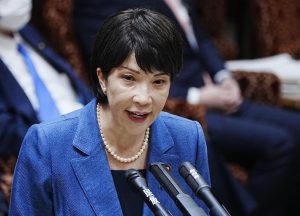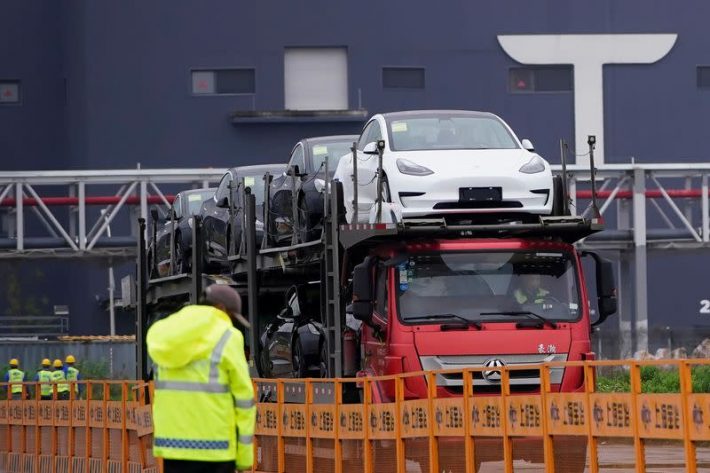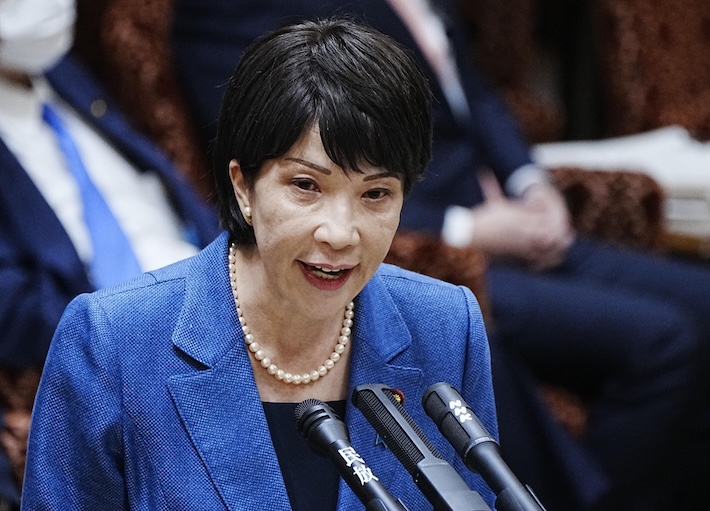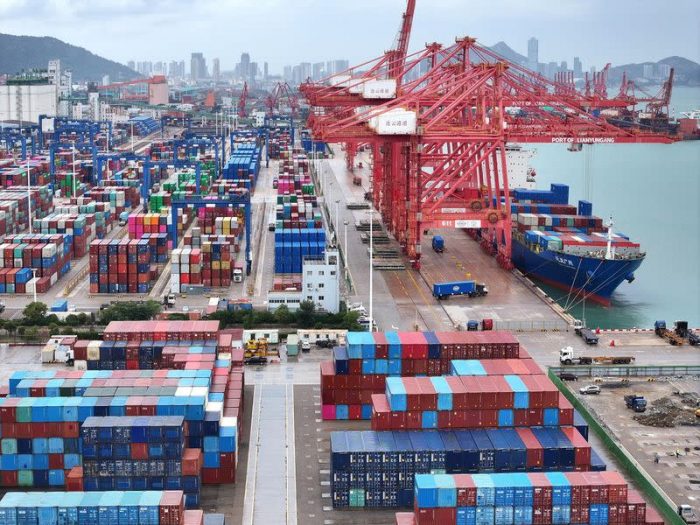(ATF) Ling Gan, head of the Banking Institutions Inspection Bureau, has voiced a warning for China’s banking sector: “At the beginning of 2017, the Party Central Committee with Chairman Xi Jinping clearly stated that to prevent and control financial risks is China’s top priority.”
Managing market “chaos” and resolutely cracking down on illegal activities are Ling’s main priorities, he wrote in the China Financial Journal. With the pause caused by the coronavirus, he says it is now imperative that the country rectifies the “chaos” in the banking sector. The bottom line is that banking risks are a core task to stop and control financial risks. They are the cornerstone guarantee for a high-quality economic development, he said.
In a campaign that has run for three years to date, Ling said decisive progress has been made in the liquidation of banking assets and liabilities. High-risk shadow banking and cross-finance business have been the focus of “rectification”, to push “innovative” business back to rationality and gradually break rigid payment systems.
Banks’ rate of asset growth has been reduced from 15% to about 8% since 2017, by focusing on idle capital and opening business channels. Cumulatively compressed cross-finance high-risk assets have been reduced by about 16 trillion yuan ($2.3 trillion), and inter-bank assets and liabilities have reduced compared to the start of 2017.
Ling has reversed the situation in which banking institutions rely on interbank assets to drive their own assets and profits to grow rapidly. Compared to early 2017, interbank wealth management has been significantly reduced – by 5.8 trillion yuan. The proportion of interbank wealth management in the overall system has dropped from 23% to 3.4%. And entrusted loans decreased by 1 trillion yuan in that time.
Ling says over the past few years many commercial banks got used a loose monetary environment to increase leverage without capital support, relying on interbank liabilities to achieve high-speed “false expansion of assets.” Only by going back to the grassroots and reordering the banking sector can capital constraints be truly strengthened to guide the industry to allocate more financial resources to key areas – weak links in economic and social development – and better meet the diverse financial needs of the people and the real economy.
“Various contradictions and pressures in the operation of the real economy continue to be transmitted to the banking industry, and corporate risks and financial risks are intertwined. Only by resolutely resolving market chaos can we truly put proactive prevention and resolution of systemic financial risks in a more important position. [We must] realise early, identify, have an early warning, early detection, and early disposal, and strive to improve the financial security defence line with a risk emergency response mechanism.”
Talk of ‘chaos’ is rare
Ling is obviously very concerned about the state of China’s banking system, following the announcement of the new Securities Law and making “creating financial disorder” a high-level crime with potential punishment of life in prison in the Criminal Code. Things look relatively smooth on the surface, but Ling, as leader of financial enforcement, seems very concerned about what is happening under the covers. The word “chaos” is very rarely used by top leaders, such as during the uprising in 1989.
Ling says there is an urgent need to resolve chaos and promote deeper bank reform to achieve high-quality development. Though he did not mention it by name, China’s huge shadow banking sector appears to be a major concern.
“In recent years, individual companies illegally built financial groups by means of false capital injection and circular capital injection, and held shares of banks in stealth holdings and an overly-proportionate number of illegal loans. As a result, the internal checks and balances and control mechanisms of some small and medium-sized banks were virtually ineffective, and they overburdened themselves. Some large and medium-sized banks have formed complex group structures in the course of integrated operation, and there are hidden risks. Only by resolutely resolving this market chaos can we deepen the governance reform of commercial banks, manage and control the problems of large shareholder manipulation and insider control, strengthen the consolidated management of banking groups, and eliminate the real hidden dangers and institutional obstacles to the high-quality development of the banking industry,” he said in his report.
It appears that Ling is set to descend on China’s banks with a “strike hard campaign”, to flood the banks with supervisors in order to gain strict accountability, to encourage true innovation, combat ‘false innovation’, and punish law-breakers and arbitrageurs. He wants to ensure the banking system is fair, orderly and profitable.
“To rectify the chaos in the banking market, we must first have far-reaching strategic considerations and correct deployment arrangements. The China Banking and Insurance Regulatory Commission has thoroughly implemented the guidelines of the Party Central Committee and the State Council on ‘stabilising the overall situation, coordinating and coordinating, classifying and implementing strategies, and accurately dismantling bombs,’ fully considering the long-term and complexity of the chaos in the banking market, and organising stable and orderly matters throughout the system and industry.”
So far, a number of cases have come to light, such as catching the Guangfa Bank’s Huizhou Branch offering illegal guarantees; finding illegal loans at Pudong Development Bank’s Chengdu branch, an illegal billing case at the Postal Savings Bank’s Gansu Wuwei branch, false financial mismanagement at Minsheng Bank’s Hangtianqiao branch, and many more.
But the banking industry’s culture of compliance continues to grow, Ling says. With the deepening of efforts to counter corruption and the increasing cost of illegal activity, the argument that “compliance creates benefits” and that “compliance starts at the top” seems to have achieved a consensus across the sector.
But Ling said the work is far from over as they plan in-depth search for management loopholes and weak links in aspects of institutional mechanisms, process control and system applications. Over the past two years, 39,100 business processes and management systems have been formulated and revised, and 2,313 process systems have been developed and improved. They cover major business areas and links.
Structural reform of the financial service’s supply-side is the main task of reducing disorder. Ling’s cadres will deepen this structural reform, which is the only way for China to develop a modern financial system.
Closing regulatory loopholes and supplementing regulatory shortcomings are important items on Ling’s “to do” list to guarantee that things will improve.
“The essence of modern banking supervision lies in achieving supervision that is effective and in accordance with the law,” he said. “In actual work, we dare to achieve ‘blade inwards’, to weave an effective supervision grid, and lay a solid foundation for the improvement of chaos. The current business structure and risk characteristics of the banking industry are undergoing profound changes. In order to steadily promote the improvement of chaos, it is necessary to thoroughly study risks, investigate loopholes as early as possible, fill in shortcomings as much as possible, reduce regulatory arbitrage space, and strengthen the coordination and cooperation between regulations. [We must] continuously improve the quality and efficiency of supervision.”
To this end, the China Banking and Insurance Regulatory Commission organised a “look back” this year at the ‘chaos’ in the banking and insurance industry.
“One motive is to see if the main responsibilities are in place; the second is to see whether the real economy really benefits; the third is to see whether the rectification measures are strict and effective, the fourth is to see whether the violations of laws and regulations are effectively contained, and the fifth is to see whether the compliance mechanism is sound and effective,” Ling said.
It is worth remembering that the Thai banking system was clogged with non-performing loans for many years after the Asian financial crisis in 1997. Ling clearly wants to avoid any repeat of that situation.






